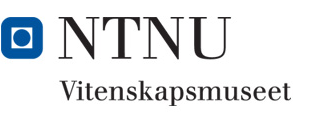Vitenskapsmuseets blogger
Livets tre
Evolusjonære forhold mellom levende organismer blir vanligvis presentert som et tre. Det moderne konseptet av livets tre går tilbake til det 19. århundre da Charles Darwin (1859) og Ernst Haeckel (1866) forsto at prinsippet bak opprinnelsen til artsmangfold var arv med modifikasjon. De tolket slektskapet mellom arter og presenterte det i form av et tre, med nærstående arter på søstergrener.

«The affinities of all the beings of the same class have sometimes been represented by a great tree… As buds give rise by growth to fresh buds, and these if vigorous, branch out and overtop on all sides many a feebler branch, so by generation I believe it has been with the great Tree of Life, which fills with its dead and broken branches the crust of the earth, and covers the surface with its ever branching and beautiful ramifications» (Darwin, 1859)
I dag kan vi visualisere treet på en bedre måte enn noen gang, fordi både teori og datakraft/programmer, men også mengden data tilgjengelig har blitt mye bedre etter at DNA-sekvensering ble tatt i bruk.
I boka THE TREE OF LIFE, har 75 forfattere samarbeidet for å samle den nyeste kunnskapen om livets tre.

Oppsummering fra utgiver: «It is a comprehensive overview of the evolution of living organisms. Chapters include genome features, evolution of characters, biogeography and biodiversity, differentiation and speciation, plus chapters on evolution influencing factors including symbiosis, biogeography, systematics, and phylogenetic research that drives the field«
Les mer i den engelske versjonen av blogginnlegget.
Mer informasjon om boka finner du her: Vargas, P., & Zardoya, R. (2014). The tree of life: Evolution and classification of living organisms. Sinauer Associates. 719 pp.
Maria Capa er medforfatter på et av kapitlene: Aguado, MT., Capa, M., Oceguera-Figueroa, A. & Rouse, G. 2014. Annelids, segmented worms. In: Vargas, P. & Zardoya, R. (eds). The tree of life: Evolution and classification of living organisms. Sinauer Associates.
Boka kan brukes som tilleggsinformasjon på følgende kurs ved NTNU Institutt for biologi:
BI8002 – Advanced Biosystematics
BI2036 – Marine Biodiversity
BI2043 – Biodiversity and Conservation Biology I
BI3082 – Biodiversity and Conservation Biology II
BI1002 – Faunistikk og floristikk/Faunistics and Floristics
